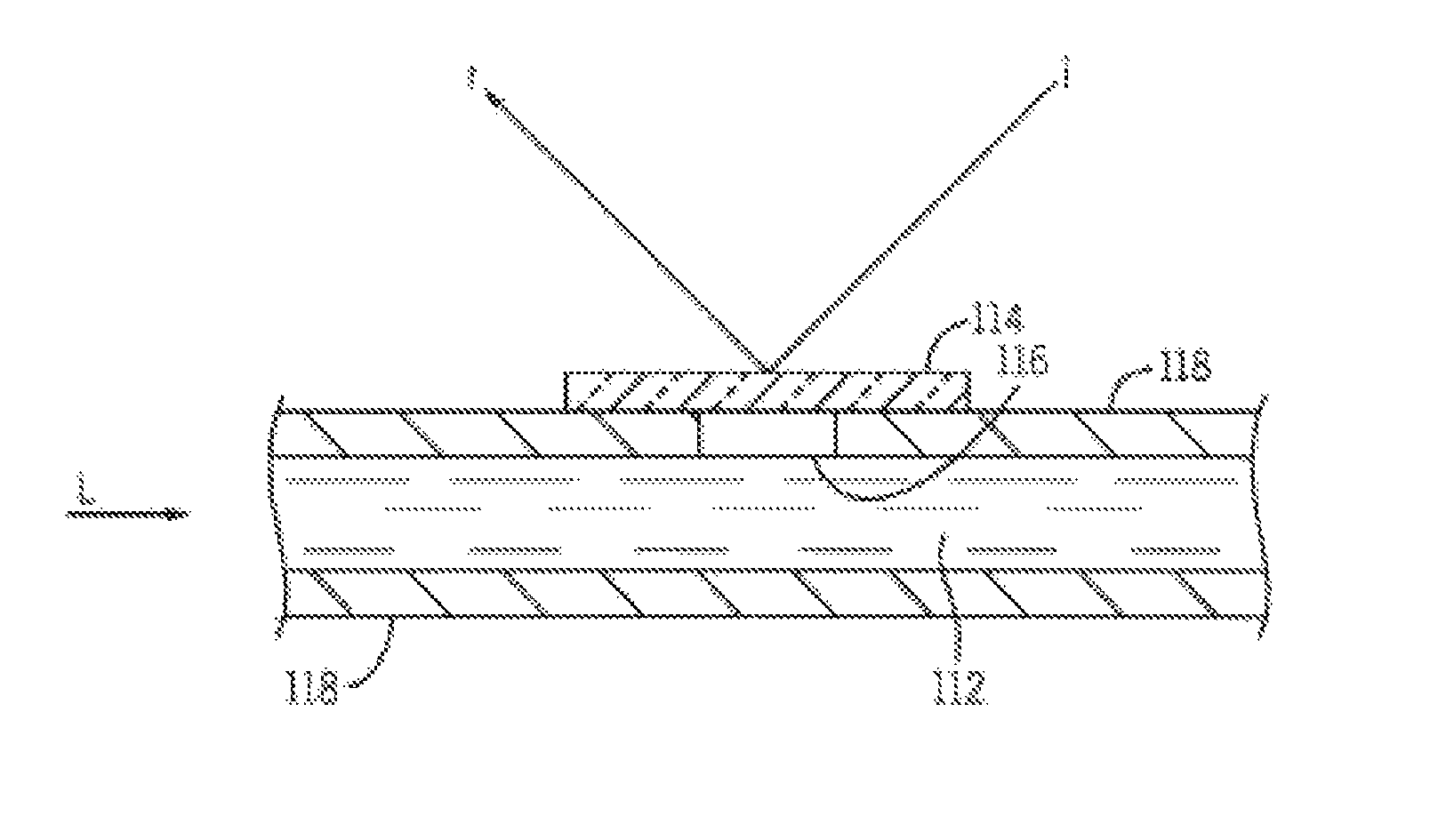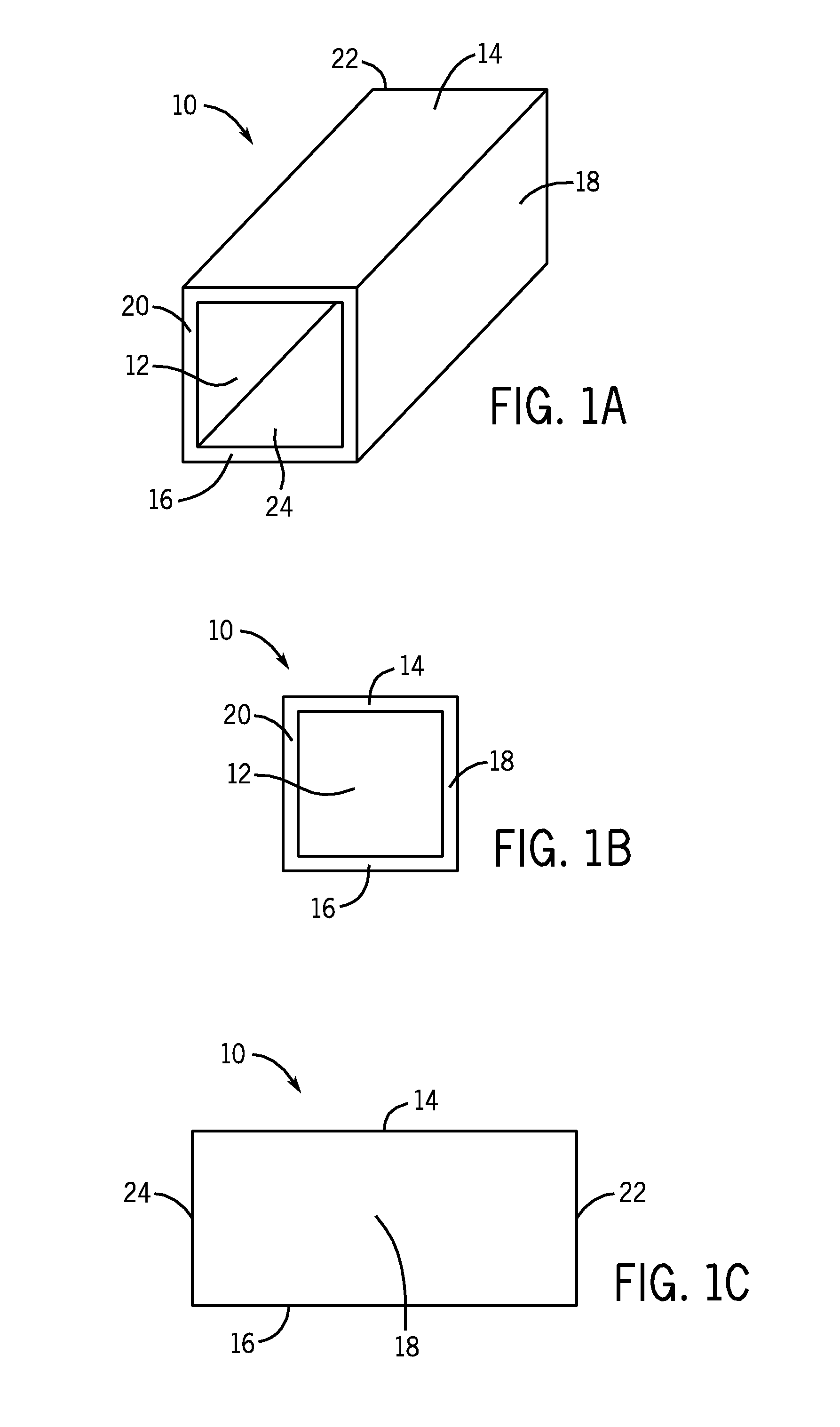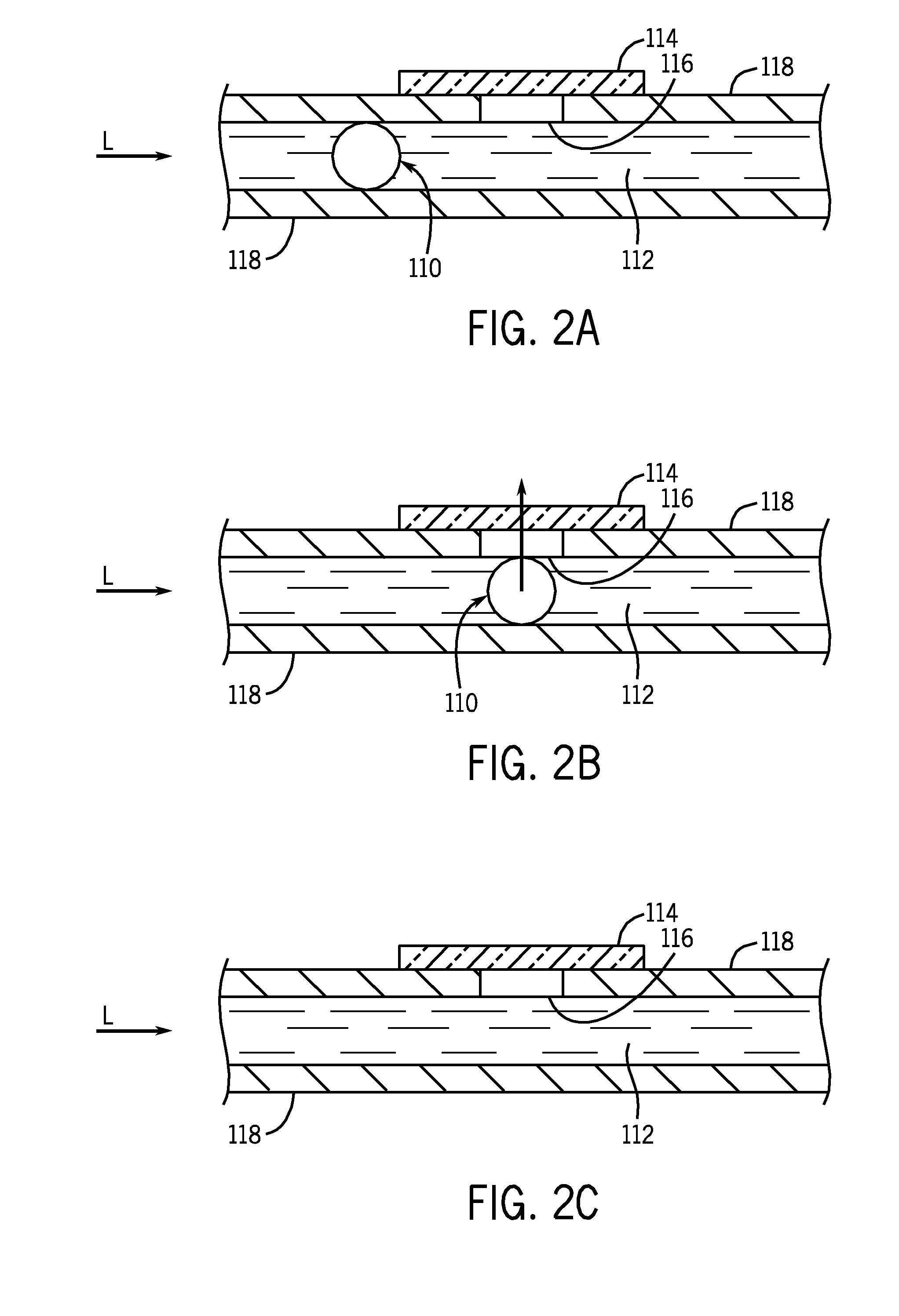Microfluidic device having a flow channel
a microfluidic device and flow channel technology, which is applied in the field of microfluidic devices having flow channels, can solve the problems of gas bubbles in microfluidic devices, adversely affecting the accuracy of the flow rate, and the presence of gas bubbles also adversely affecting the mixing of liquids, so as to improve the accuracy and consistency of analytical results, improve the accuracy of priming activity, and facilitate assembly
- Summary
- Abstract
- Description
- Claims
- Application Information
AI Technical Summary
Benefits of technology
Problems solved by technology
Method used
Image
Examples
example 1
[0062]Measurement of the concentration of cocaine enables confirmation of substance abuse. The assay for cocaine is based on the competition between a drug labeled with an enzyme and the drug from a sample of urine for a fixed number of binding sites on an antibody that specifically binds to the drug. In the absence of the drug from the sample of urine, the antibody binds to the drug labeled with the enzyme glucose-6-phosphate dehydrogenase (G6PDH), and the enzyme activity is inhibited. The G6PDH enzyme activity is determined spectrophotometrically at 340 / 412 nm by measuring the ability of the enzyme to convert nicotinamide adenine dinucleotide (NAD) to NADH, the reduced form of NAD.
[0063]The reactive ingredients involve two reagents, Reagent 1 and Reagent 2. Reagent 1 comprises anti-benzoylecgonine monoclonal antibodies (mouse), glucose-6-phosphate (G6P), and nicotinamide adenine dinucleotide (NAD). Reagent 2 comprises benzoylecgonine labeled with glucose-6-phosphate dehydrogenase ...
example 2
[0067]Measurement of the concentration of creatinine enables assessment of renal function. At an alkaline pH, creatinine in the sample (serum, plasma, urine) reacts with picrate to form a creatinine picrate complex. The rate of increase in absorbance at 500 nm due to the formation of this complex is directly proportional to the concentration of creatinine in the sample.
[0068]The reactive ingredients involve two reagents, Reagent 1 and Reagent 2. Reagent 1 comprises sodium hydroxide. Reagent 2 comprises picric acid.
[0069]Measurement is carried out by means of a spectrophotometer at 500 nm. Results are determined at the stable reading after reaction.
[0070]Additional information is set forth on the package insert marked ARCH ITECT / AEROSET Creatinine, Ref 7D64-20, incorporated herein by reference. See, for example, AEROSET System Operations manual 200154-101-November 2004, pages 3-7 and 3-9 through 3-11, inclusive, incorporated herein by reference.
[0071]According to the package insert, ...
example 3
[0072]Measurement of the concentration of ethanol enables the determination of a person's level of intoxication for legal or medical reasons. In the presence of alcohol dehydrogenase and nicotinamide adenine dinucleotide (NAD), ethanol is readily oxidized to acetaldehyde and NADH. The enzymatic reaction can be monitored spectrophotometrically at 340 / 412 nm.
[0073]The reactive ingredients involve two reagents, Reagent 1 and Reagent 2. Reagent 1 comprises Tris buffer. Reagent 2 comprises alcohol dehydrogenase (ADH) and NAD.
[0074]Measurement is carried out by means of a spectrophotometer at 340 / 412 nm (the reading of absorbance taken at the secondary wavelength is subtracted from the reading of absorbance taken at the primary wavelength, and the difference is used as the absorbance value). Results are determined at the stable reading after reaction.
[0075]Additional information is set forth on the package insert marked ARCHITECT / AEROSET MULTIGENT ETHANOL; Ref 3L36-20, incorporated herein...
PUM
| Property | Measurement | Unit |
|---|---|---|
| thickness | aaaaa | aaaaa |
| pore size | aaaaa | aaaaa |
| height | aaaaa | aaaaa |
Abstract
Description
Claims
Application Information
 Login to View More
Login to View More - R&D
- Intellectual Property
- Life Sciences
- Materials
- Tech Scout
- Unparalleled Data Quality
- Higher Quality Content
- 60% Fewer Hallucinations
Browse by: Latest US Patents, China's latest patents, Technical Efficacy Thesaurus, Application Domain, Technology Topic, Popular Technical Reports.
© 2025 PatSnap. All rights reserved.Legal|Privacy policy|Modern Slavery Act Transparency Statement|Sitemap|About US| Contact US: help@patsnap.com



